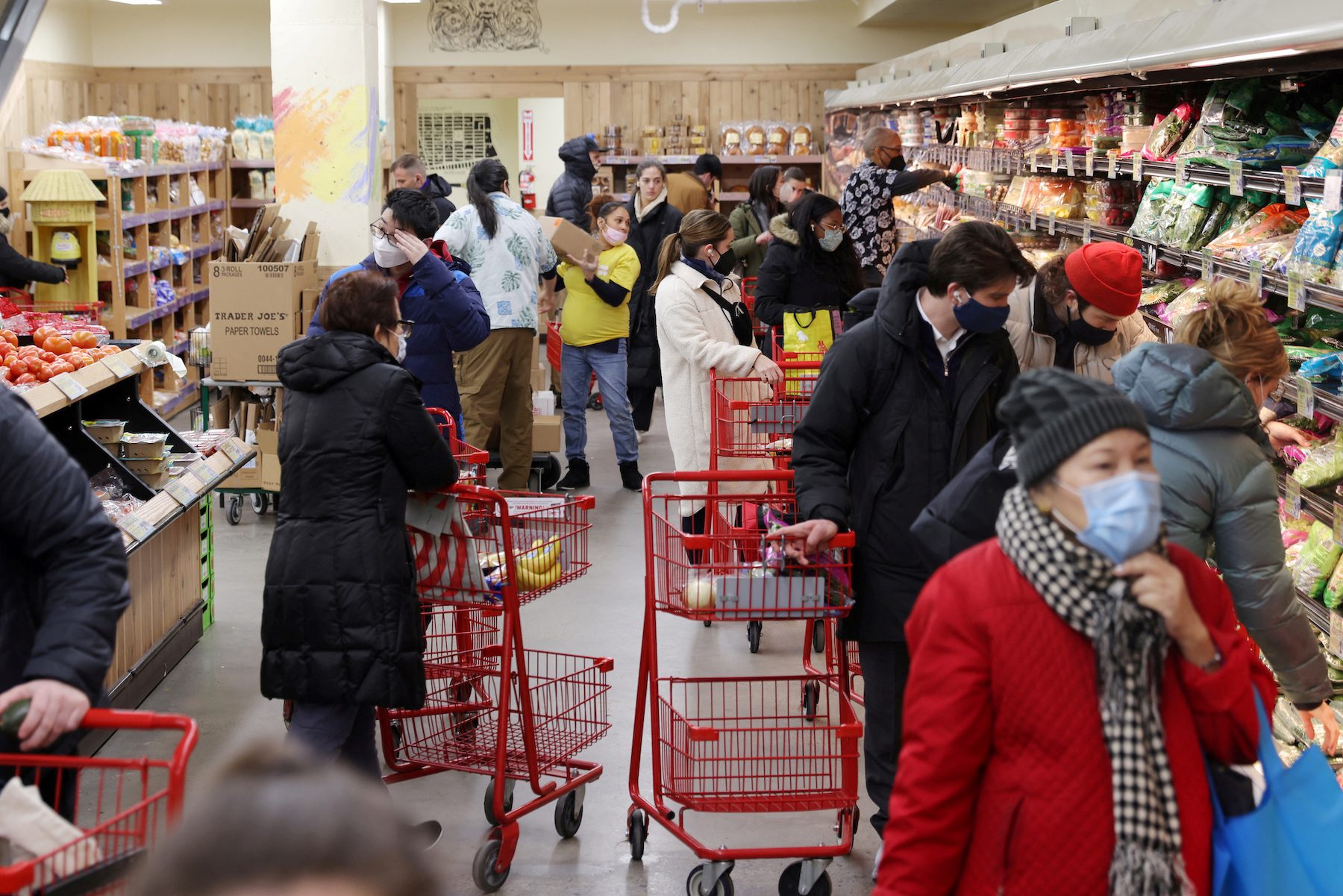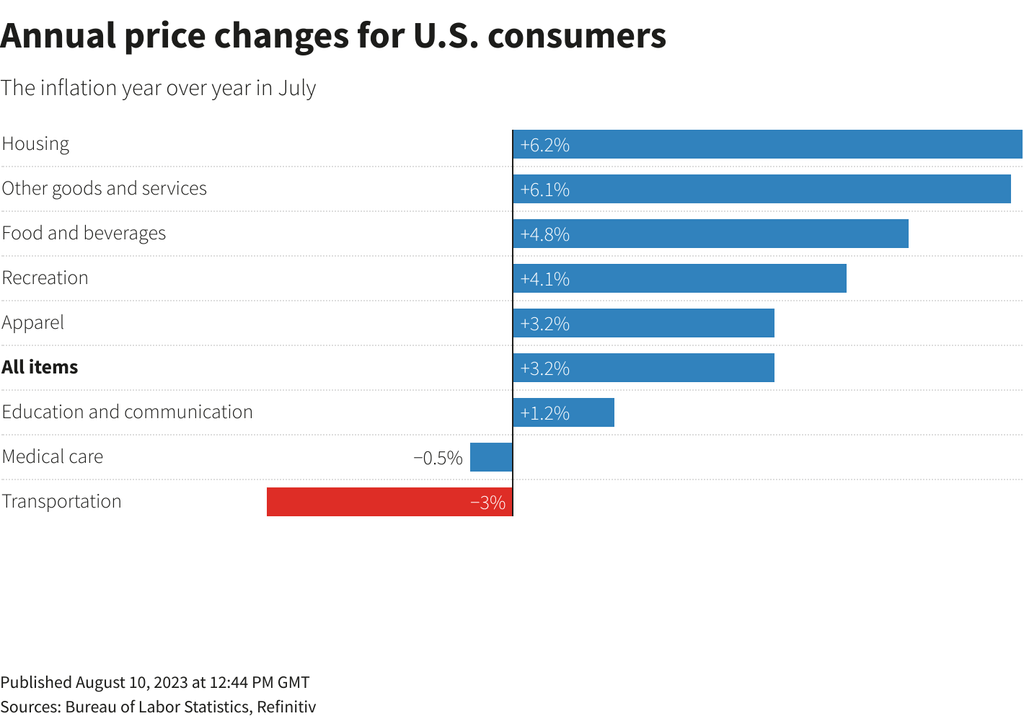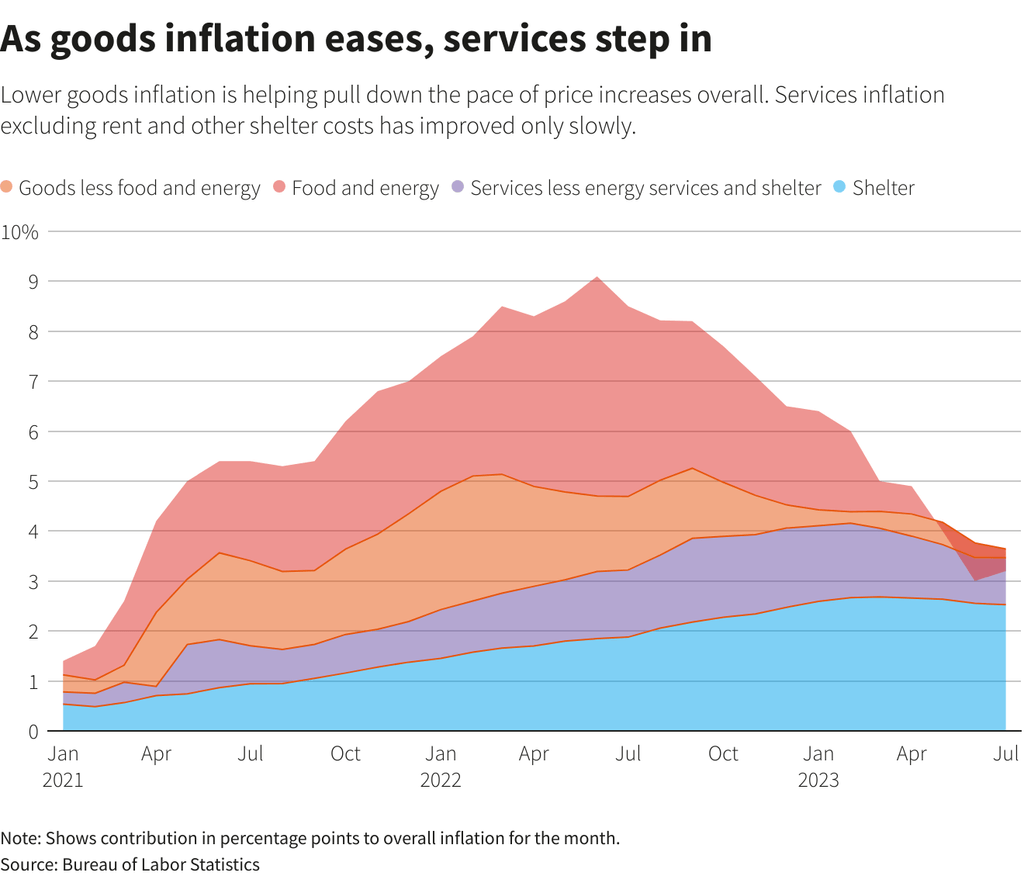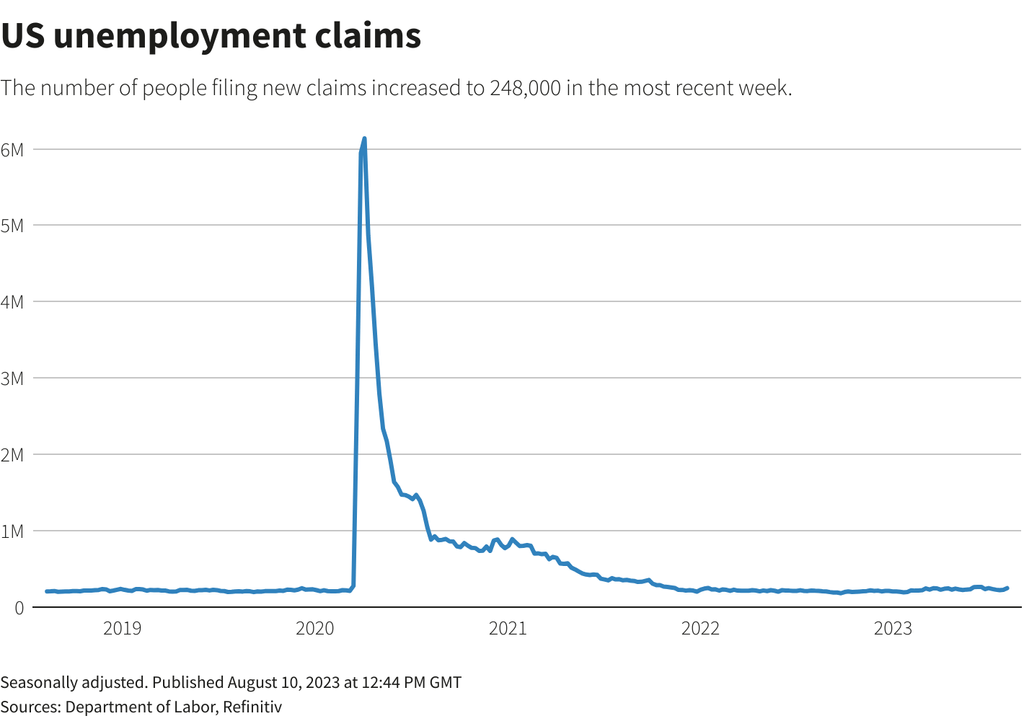SUMMARY
This is AI generated summarization, which may have errors. For context, always refer to the full article.

WASHINGTON, USA – US consumer prices increased moderately in July as higher rents were mostly offset by declining costs of goods such as motor vehicles and furniture, a trend that could persuade the Federal Reserve to leave interest rates unchanged next month.
The report from the Department of Labor on Thursday, August 10, also showed underlying inflation pressures subsided further last month. The annual increase in prices excluding the volatile food and energy components, the so-called core inflation, was the smallest in nearly two years.
Moderate inflation, together with a cooling labor market, bolstered economists’ conviction that the US central bank will be able to engineer a “soft landing” for the economy, after a year of hand-wringing about a recession.
“Significant progress on the inflation front has been made, a persistent trend of disinflation is evident,” said Sung Won Sohn, a finance and economics professor at Loyola Marymount University in Los Angeles. “It is time for the central bank to stop its campaign to beat inflation, it should wait and see for a while.”
The consumer price index rose 0.2% last month, matching the gain in June. Shelter accounted for more than 90% of the increase in the CPI, with rental costs increasing 0.4%.
Food prices gained 0.2%. Grocery food prices increased 0.3% after being unchanged in June. They were boosted by higher prices for eggs, beef, dairy, as well as fruit and vegetables. Still, grocery store prices have slowed considerably, increasing 3.6% on a year-on-year basis in July after peaking at 13.5% in August 2022.
Restaurant meal prices rose 0.2%, slowing back to pre-pandemic trends. The cost of energy products edged up 0.1%, with gasoline prices rising slightly. A jump in prices at the pump in late July will likely be reflected in the August inflation report.
The CPI advanced 3.2% in the 12 months through July. That followed a 3% rise in June, which was the smallest year-on-year gain since March 2021.

The increase in the annual CPI rate picked up for the first time in 13 months as it was calculated from a lower base after prices subsided last July following a jump that had boosted inflation to a pace not seen in more than 40 years.
Annual consumer prices have come down from a peak of 9.1% in June 2022. The CPI increased at a 1.9% annualized rate over the last three months, the slowest pace since June 2020, from 2.7% in June. The Fed has a 2% inflation target.
Economists polled by Reuters had forecast the CPI would rise 0.2% last month and by 3.3% on a year-on-year basis.
“Consumers are seeing broad-based relief on prices as the economy operates in lower gear and a small margin of slack opens in the labor market,” said Bill Adams, chief economist at Comerica Bank in Dallas.
The CPI report is one of two before the Fed’s September 19-20 policy meeting. Financial markets overwhelmingly expect the central bank to leave its policy rate unchanged at that meeting, according to CME Group’s FedWatch tool. Since March 2022, the Fed has raised its benchmark overnight interest rate by 525 basis points to the current 5.25%-5.50% range.
Stocks on Wall Street were trading higher. The dollar edged down against a basket of currencies. US Treasury prices fell.
Rental costs remain high
Excluding food and energy, the CPI gained 0.2% in July, matching the rise in June. Underlying inflation was curbed by a 0.3% drop in core goods prices, which followed a 0.1% dip in June. Goods deflation was driven by used cars and trucks, whose prices dropped 1.3%. There were also decreases in the prices of new cars and household furnishings.
But services inflation remained sticky, rising 0.3% for a third straight month. Services were lifted by higher rental costs. Owners’ equivalent rent, a measure of the amount homeowners would pay to rent or would earn from renting their property, rose 0.5% after climbing 0.4% in June.
Independent measures have been showing rental costs on a downward trend as more apartment buildings come on the market. Rent measures in the CPI tend to lag the independent gauges by several months. The annual increase in rents slowed to 7.7% in July after topping 8.1% in March.
“Housing disinflation will pick up momentum in the coming months,” said Lydia Boussour, senior economist at EY-Parthenon in New York.
There were also increases in the costs of motor vehicle insurance, education, and recreation. But airline fares declined 8.1%, falling for the fourth consecutive month. Hotel and motel rooms were cheaper last month.

In the 12 months through July, the so-called core CPI increased 4.7%. That was the smallest year-on-year advance since October 2021 and followed a 4.8% rise in June. The core PCE increased at a 3.1% annualized rate in the past three months, the slowest pace since September 2021, after rising 4.1% in June.
But the economy is not out of the woods yet. Though the labor market is slowing, conditions remain tight, keeping wages elevated and driving solid economic growth. A spate of strikes, heat waves across the country, and the ongoing Russia-Ukraine war could fan inflation pressures, economists warned.
Cooling inflation also means improved purchasing power for households, underpinning demand. Real average hourly earnings for all employees increased 0.3% in July.
“This report does not yet guarantee that we have seen the last rate increase,” said Richard de Chazal, macro analyst at William Blair in London.
In another report on Thursday, the Department of Labor said initial claims for state unemployment benefits increased 21,000 to a seasonally adjusted 248,000 for the week ended Saturday, August 5, exceeding economists’ expectations for a reading of 230,000.

The larger-than-expected rise was driven by an outsized jump in filings in Ohio, a state that has previously experienced problems with fraudulent applications. The collapse of Yellow Trucking was also cited as a factor by economists.
The number of people receiving benefits after an initial week of aid, a proxy for hiring, fell 8,000 to 1.684 million during the week ending July 29, the claims report showed. Some laid-off workers are experiencing short spells of unemployment. – Rappler.com
Add a comment
How does this make you feel?

![[OPINION] A rebellion long overdue](https://www.rappler.com/tachyon/2024/06/mass-uprising-matrix-june-4-2024.jpg?resize=257%2C257&crop_strategy=attention)








There are no comments yet. Add your comment to start the conversation.